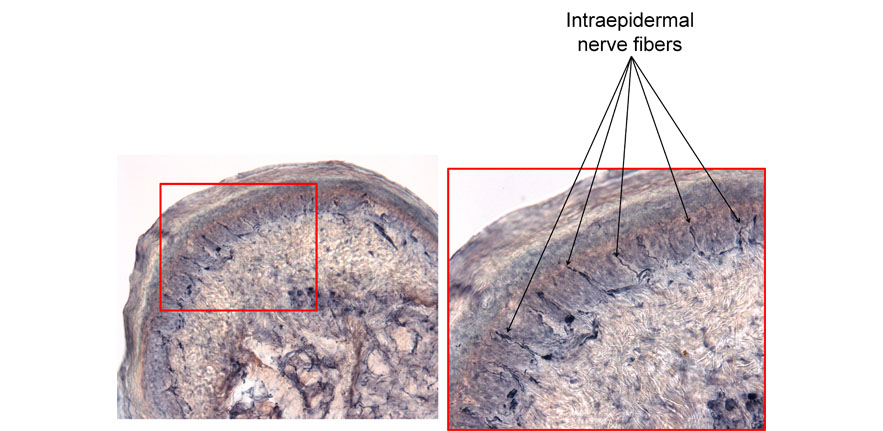Peripheral Neuropathies
Peripheral neuropathies are characterized by a progressive and length-dependent loss of peripheral nerve function, which arise from varied aetiology. They can be caused either by genetic defects (inherited peripheral neuropathies) or they can be acquired throughout life due to metabolic disorders, trauma or drug toxicity.
The two most common conditions that cause peripheral neuropathy are diabetes and chemotherapy. After diabetic neuropathy, chemotherapy-induced peripheral neuropathy (CIPN) is the second most common peripheral neuropathy, affecting 250,000 in the UK, a number which is rising as the population ages and as more patients survive. CIPN is a common and potentially dose-limiting side effect of many chemotherapy drug treatments and it is thought to begin with degeneration of sensory axons, or their terminal regions. One of the leading hypotheses is that axons undergo ‘dying back’ pathology because axonal transport is impaired by several chemotherapy drugs. As the presence of slow Wallerian degeneration protein (WLDS) and the deletion of SARM1 (sterile alpha and TIR motif containing protein 1) strongly protect axons from degeneration when axons are injured or axonal transport is blocked, we are testing whether these mutations can protect axons in CIPN mouse models in vivo. The results are likely to be relevant to other peripheral neuropathies including diabetic neuropathy, and to disorders involving axonal transport disruption including multiple sclerosis and glaucoma.

